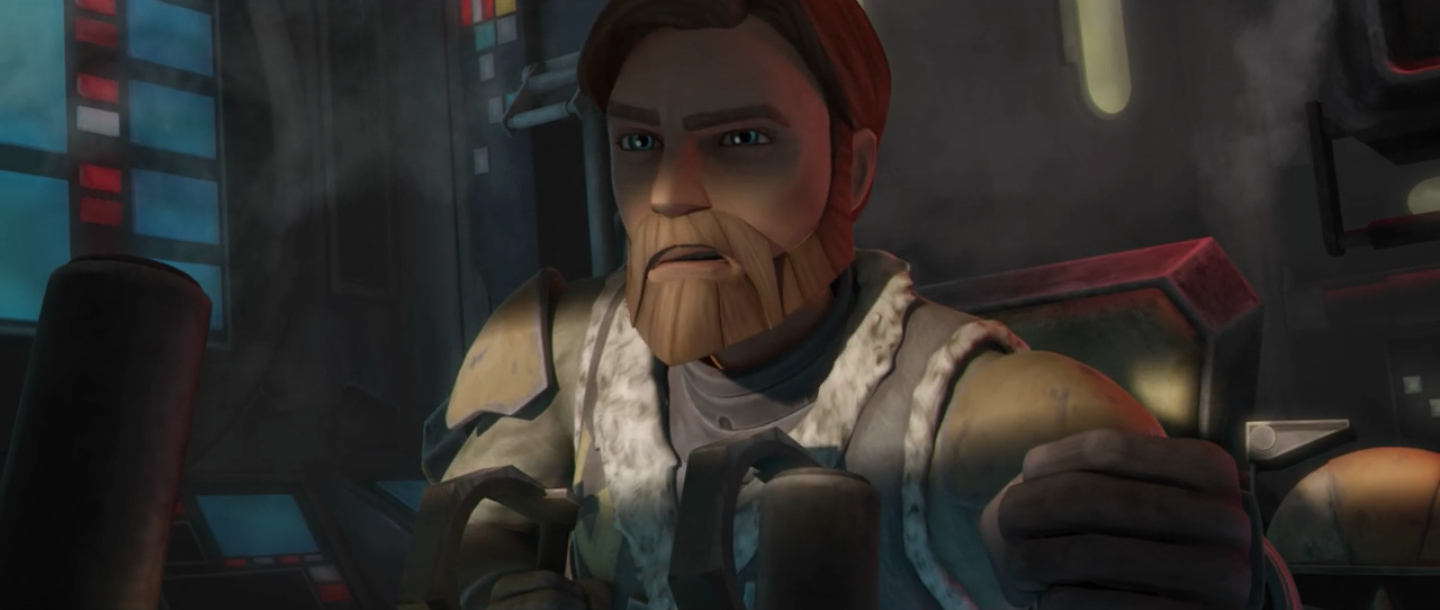THE PSYCHOLOGICAL PRISON
The psychological prison is a representation of an emotional state. It’s often portrayed by boxing a character in using the image frame, as we’ve discussed in the other parts of this analysis. However, there is another famous technique where the surroundings or the lighting can be used to actually look like bars (i.e. prison bars). In film school, we studied The 400 Blows. This film has a very famous final frame:

At the end of the film, the main character (a young teenage boy) runs away to the seashore (a barrier… it’s not like he can swim away from his troubles). He realizes he has nowhere else to go, he is trapped/imprisoned by his situation in life. He turns and faces the camera and the words “the end” appear over his face like prison bars.
“The Lawless” does something similar. After Kenobi and Satine are captured by Maul, Obi-Wan is often surrounded by long vertical lines:
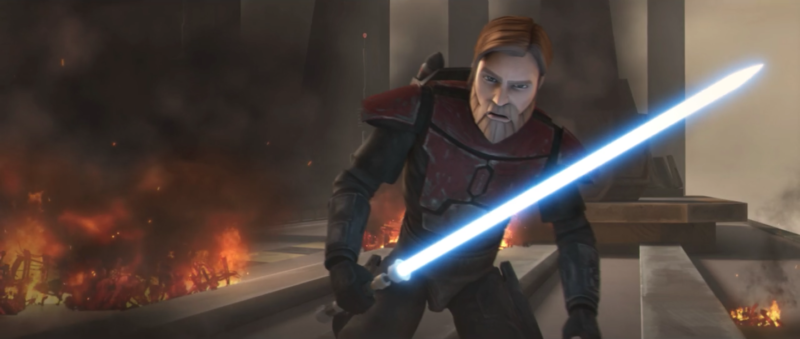
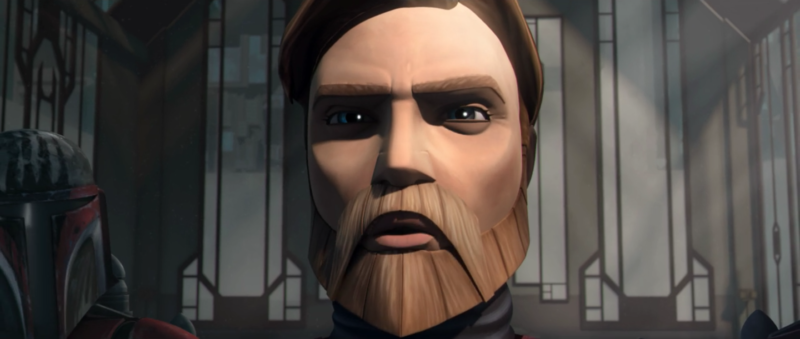
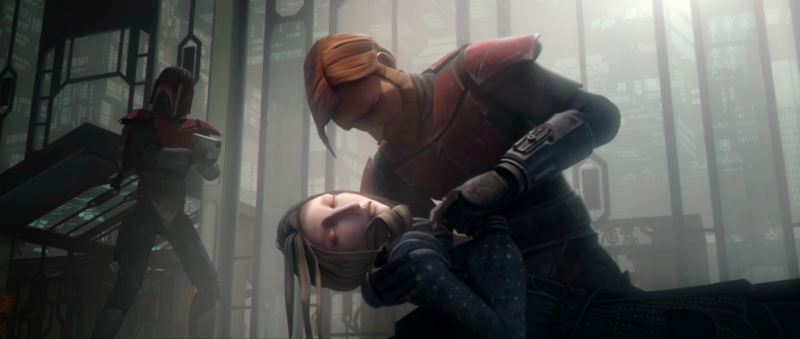
In the following shot, not only are there vertical bars created by the designs on the windows, but the Dark Saber and the guard’s legs create an even tighter prison around Obi-Wan. As Satine gets closer to death, Kenobi’s internal prison grows more suffocating…
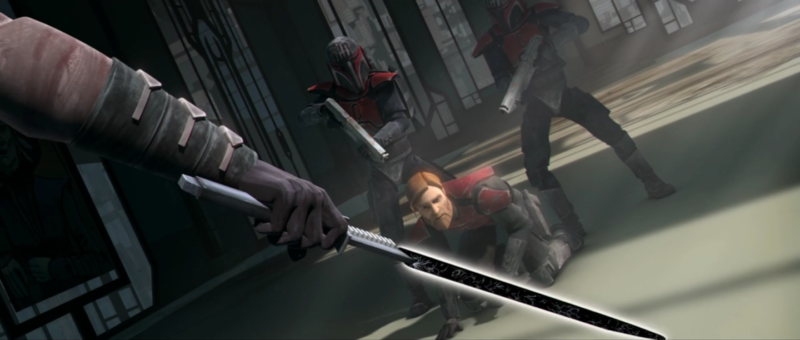
… until the guard’s legs literally cover Obi-Wan, placing him fully behind bars (leg bars…but bars all the same):

LOW-ANGLE POWER TRIP
This is probably well-known to most people. When you want to make a character look powerful, you photograph them from a low angle. It gives the impression that they are towering over everyone around them. Maul gets A LOT of low angles:
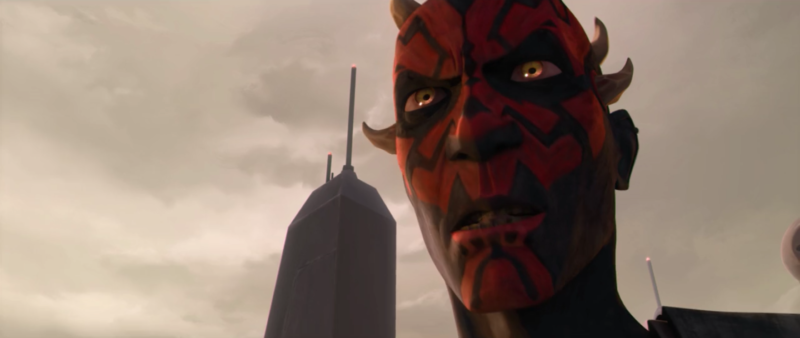
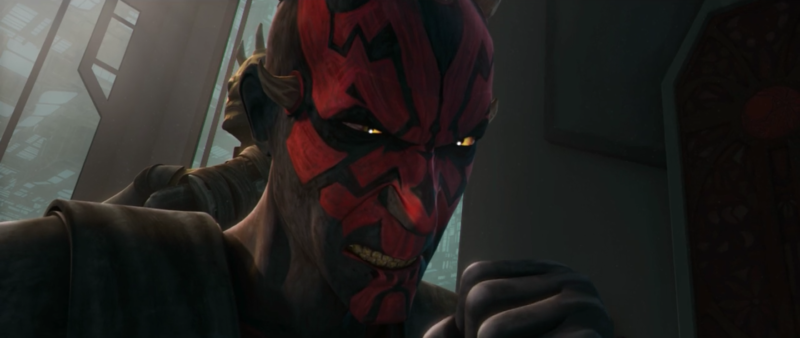
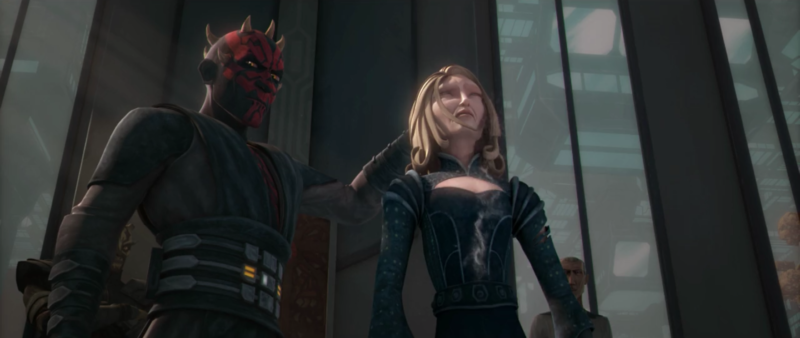
LOSS OF CONTROL
When you want to signify that a character is losing control or that they’re environment is changing faster than they can adapt to it, filmmakers will often use what is called a Dutch Angle – where the camera is tilted to create an oblique frame. You know it’s a Dutch Angle if the floor is no longer parallel with the frame. Here’s an example for you.
Look at the pink line I drew on the wall. It’s parallel with the floor and the image’s frame:
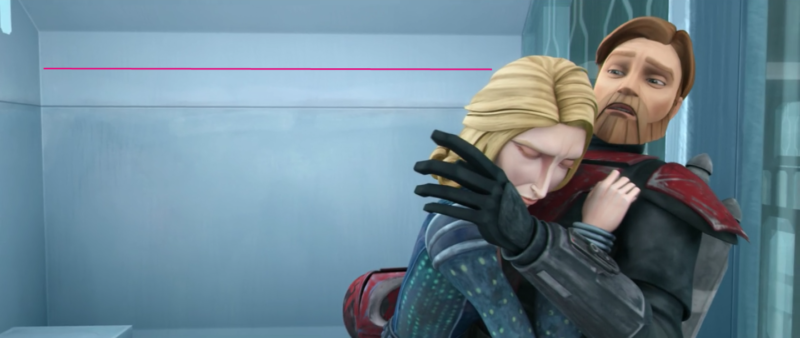
Now, the longer Satine hugs Obi-Wan, the less comfortable he is. A Dutch Angle nearly always implies discomfort. In the following image, the frame tilts, and now you can see the pink line is no longer parallel with the floor (look at how Obi-Wan, Satine, and the room are tilted around the pink line):
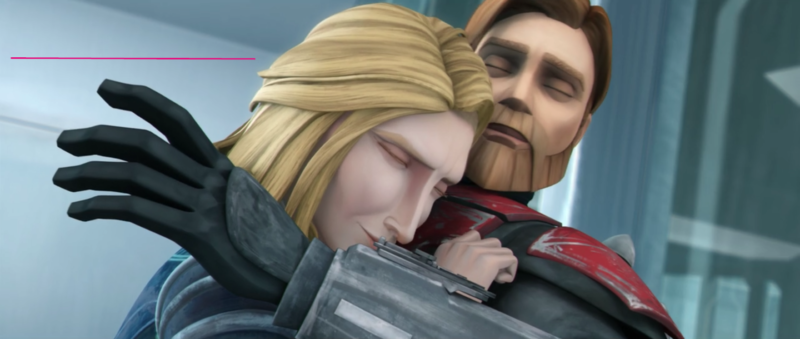
There are quite a lot of Dutch Angles used in this episode, but that’s not too surprising considering the emotional distress everyone is experience.
Like when Maul starts to get really angry:
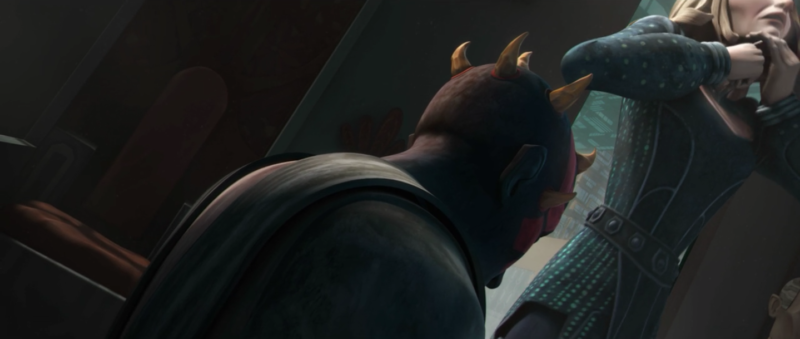
When Obi-Wan gets knocked to the ground and cannot protect Satine:
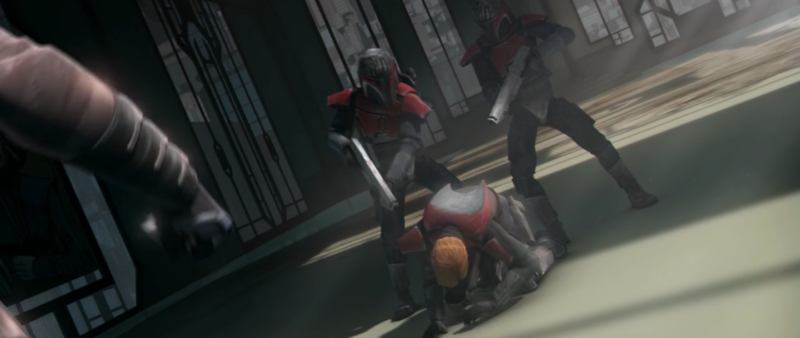
During this excruciating moment:
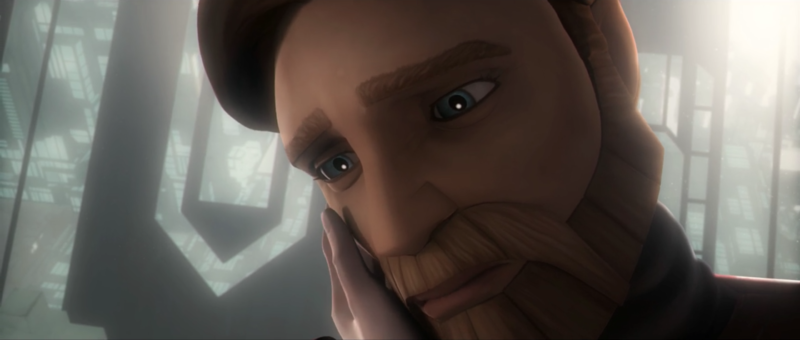
When the creepy angel of death arrives and spoils the party:
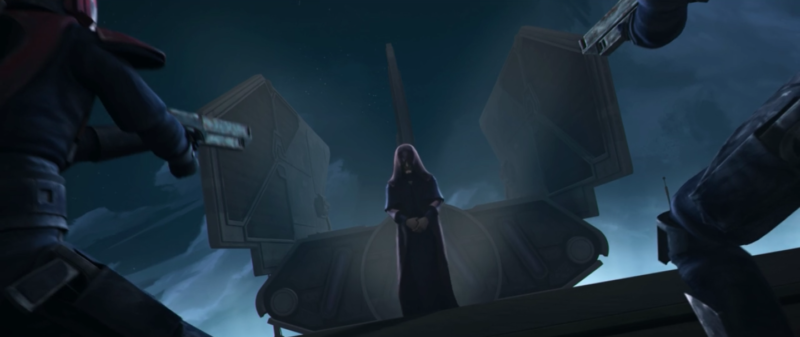
And during this famous scene where you can actually watch the angle spin from a strait frame to a Dutch Angle:
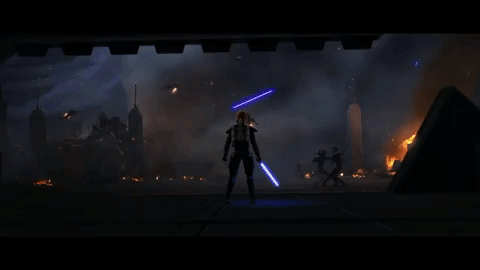
Well, friends, that’s it for now. Hope you’ve enjoyed this.
Have any questions? Have a favorite scene you want me to analyze from ANY Star Wars? Feel free to send me an ask.

